
|

|
Forum Index : Microcontroller and PC projects : HC12 and external antenna
| Author | Message | ||||
bigmik Guru Joined: 20/06/2011 Location: AustraliaPosts: 2950 |
Hi All, I am working on a project (weather station) and will be using an HC12 as the sender from the remote unit to the inside unit. Currently in my tests I am receiving good communication through approximately 20m of brick walls and plaster etc. When the remote module is finally mounted up the pole the inside unit will be approximately 30m from the remote and have to transmit through roof tiles, walls etc. The HC12 has a small connector that looks like the laptop wifi antenna connector so I assume it is for an external antenna. I did a Google search for 433mhz antennas and there is a huge range of prices and types so I thought I would consult the oracles on TBS. So Oracles, What are you using for external antennas for the HC12? And Would I need this external antenna for both the sender and receiver or will having one installed be sufficient.? Kind Regards, Mick Mick's uMite Stuff can be found >>> HERE (Kindly hosted by Dontronics) <<< |
||||
Grogster Admin Group Joined: 31/12/2012 Location: New ZealandPosts: 9610 |
Yes, I have used the external antenna socket on the HC12 a couple of times, and it can allow for stella performance range-wise. If you have a node outside, up a pole in a weatherproof box, just a standard helical soldered to the usual ant connection will still provide excellent performance, simply cost elevation will do wonders for your range. I do have one install where I specifically used those little sockets and adaptor cables etc, so I will try to find the photos I took, and upload them here so you can see the arrangement. As far as antennas per-se', it really is something of a designer/builders choice to some extent. Pretty much any 433MHz antenna will work well, so long as you keep the HC12 module inside the 433MHz band they are designed for. I have found through trial and error, that the longer length ones work SLIGHTLY better inside then the shorter ones do, and outside up a pole, even the short ones work superbly well - basically cos you have a matched antenna connected to the module, with all but the enclosure material removed in way of obstructions. For external(to the module) antennas, I use IPX-to-SMA adaptor coax leads, which allow you to easily fit any of the plethora of SMA antennas to the HC12. Leads such as these ones - be VERY sure you get the correct type of SMA connector. Most SMA antennas have a male plug on them, so you should be looking for a IPX-to-SMA female adaptor lead, naturally, but SOME antennas use a female plug and a male socket, so you need to be careful not to get caught by that. The link I supplied allows you to buy either gender and various lengths of coax. If your transmit AND receiving nodes are outside up poles, more then 2km can be expected if you use FU4 mode. I got out to well over 5km using that idea, with the base station receiver node on a pole on the roof coupled to a standard UHF masthead TV amplifier, and then into the HC12(base was receive only), and me with the transmitting node on a pole I was holding on the side of the hillside overlooking my town. To get the SMA into the masthead amp, I used SMA-to-F adaptors(link), allowing me to connect the HC12 directly to the output of the masthead amp, and the input to the amp was fed from a 434MHz base-loaded-whip antenna with SMA plug and low-loss RG58 coax. LINK This test was line-of-sight though, with no obstructions at all between them - just the airwaves.  The HC12 is a really amazing little module though - provided you get the genuine article!!!   If I can be of any further help, please do post back. I have done lots of work with the HC12's now, including the above kinds of setups, so if I can give back anything of use to others wanting to do this kind of thing, I would love to help. Smoke makes things work. When the smoke gets out, it stops! |
||||
bigmik Guru Joined: 20/06/2011 Location: AustraliaPosts: 2950 |
Hi Grogs, All, Wow all that knowledge and imparted in one go. It is going to take me some going through, I did see on RS-Online the SMA 433MHz antennas fairly cheap ($12 or so) and Aliexpress had the adapters like you linked, I think from the descriptions I need to look for IPEX1 (IPX) or uf2 type. I have some old laptops that have the same IPX header for the wifi but these will be 2.4GHz or 5GHz antennas so not much use but the connectors and coax might be usable if I make my own antenna, (although I prefer off the shelf). I will probably test the setup to see what range I can get and use that to guess-ti-mate how it would go `up the pole'. I think up the pole would have less obstruction than 2m high mounted on a brick wall and having to penetrate at least 5 or 6 walls to the receiver. Thanks again Grogster and know your little HC12s are going well. Regards, Mick Mick's uMite Stuff can be found >>> HERE (Kindly hosted by Dontronics) <<< |
||||
Grogster Admin Group Joined: 31/12/2012 Location: New ZealandPosts: 9610 |
If you are already committed to the pole on the roof idea, and if you only need 30M or so, then I would just use the standard helical antenna soldered to the module, put the module with its antenna in the waterproof box, and cable down to your system. Orient the module inside the case vertically with respect to the antenna, naturally, and mount the box so the HC12 module and antenna inside, are up above the top of the pole, to keep the module and antenna completely in the open, away from any metal. IE: any clamping arrangement to keep the case to the pole, should be BELOW the module and its antenna. It should SCREAM in there setup like that, even if you wind the HC12 output power right down to about 10mW at the transmitting end. But again, the only way to really find out, is to install it and site-test it. I encourage you to set all your HC12 modules to FU4 mode, as that greatly increases the performance of the link(very slow on-air data-rate). FU4 is only suitable for relatively small data packets though, so it does depend on if you are only sending sporadic data packets, or trying to stream data continuously from your weather station thing. Technically, I don't think you are supposed to "Stream" on the 433MHz band, so as not to hog the frequency for any other devices that might want to hop onto it, but I don't expect you are trying to stream data, are you Mick? (rhetorical!)  Still looking for the photos. I will upload them when I find them, just so you can see how I hooked up mine. Smoke makes things work. When the smoke gets out, it stops! |
||||
Grogster Admin Group Joined: 31/12/2012 Location: New ZealandPosts: 9610 |
I could not find the original photos, so I took some new ones while I was out at various jobs this afternoon.  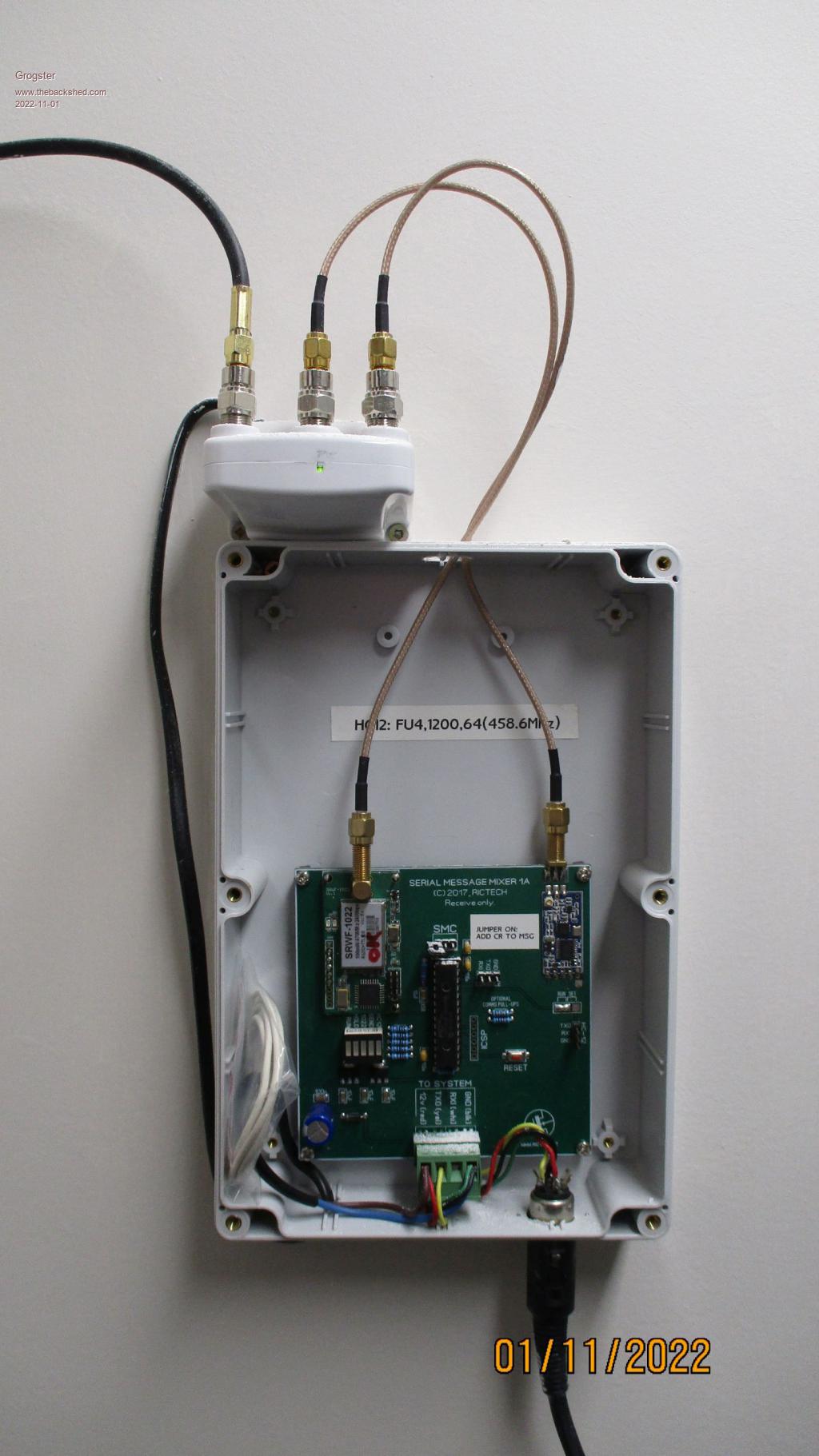 System box showing an HC12 module and a Sunray 1022 module in a mixer arrangement, using external SMA coaxes and a standard GME Kingray brand UHF booster amp. The thick black coax comes from the roof antenna, the two thinner SMA coaxes are on the amp outputs, each one feeding its own RF module. The Kingray TV amp is modified to remove its 230v transformer totally, and feed the amp via the 12v UPS so it keeps on working if there was a power cut. 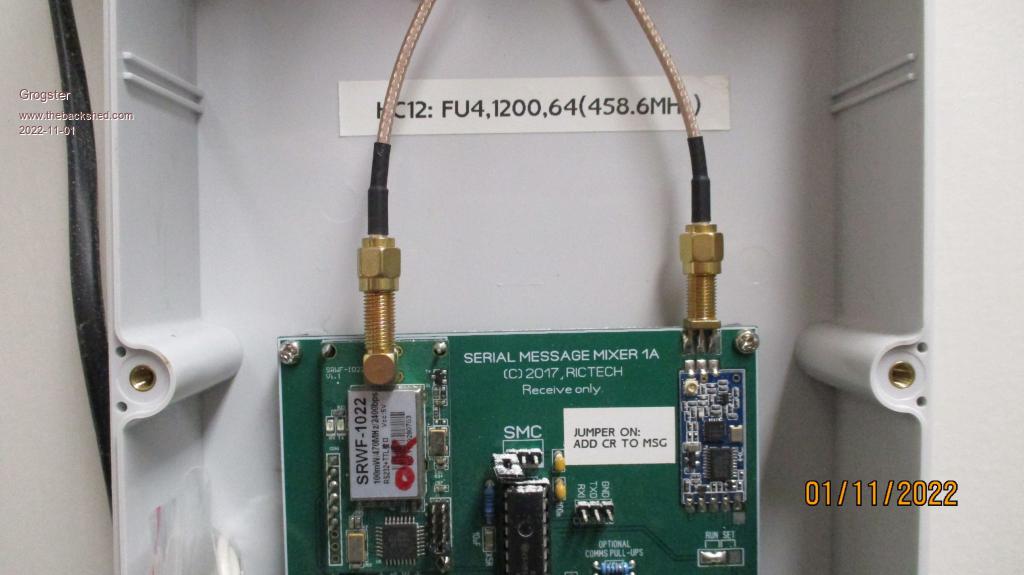 Close-up of SMA connections to mixer processor board. A Micromite 2 does all the work. 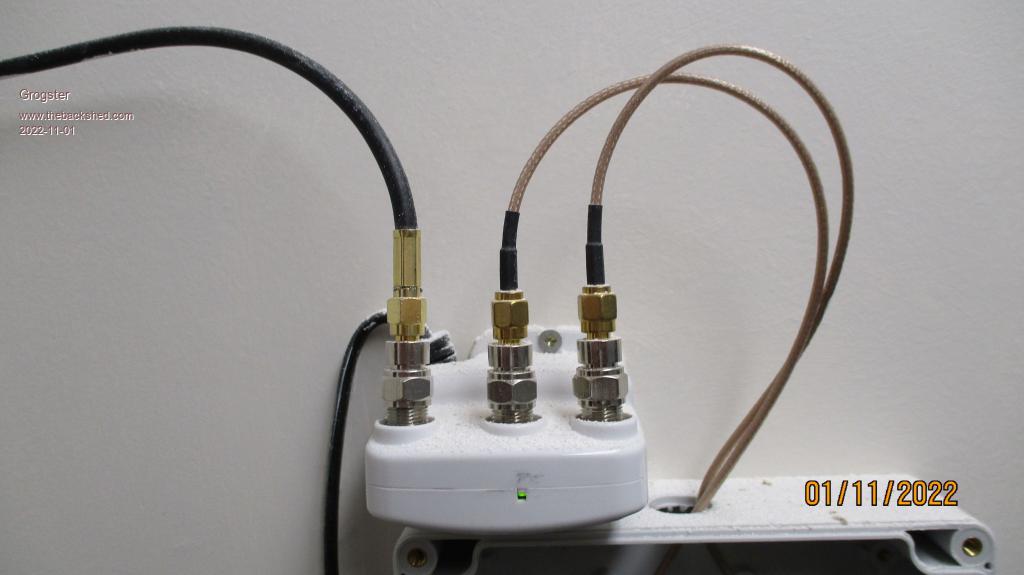 Close-up of the GME Kingray TV booster amp arrangement. 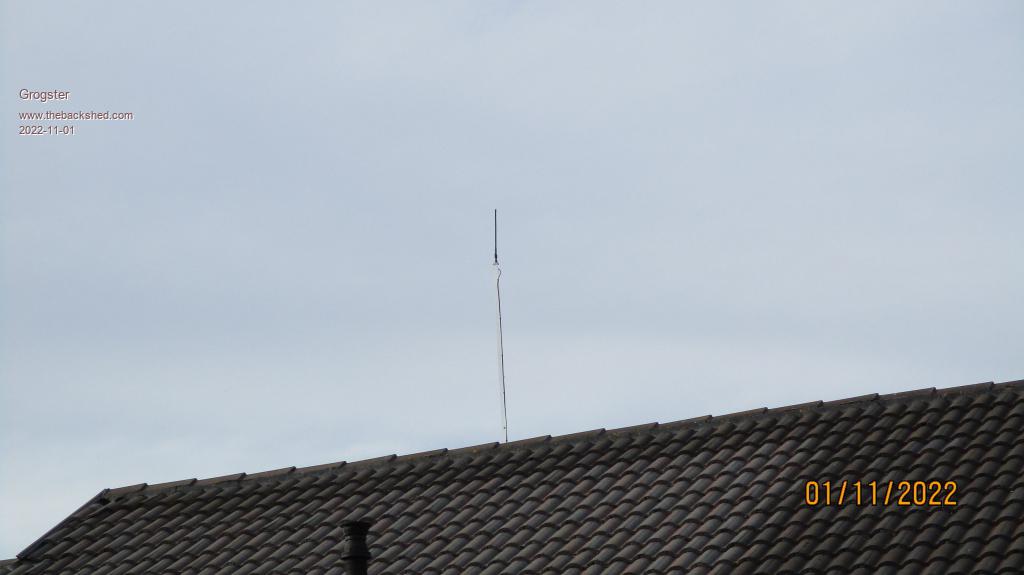 Antenna on roof. Smoke makes things work. When the smoke gets out, it stops! |
||||
bigmik Guru Joined: 20/06/2011 Location: AustraliaPosts: 2950 |
Hi Grogster, All, Thank you for your sage advice, From the synapses of what you said it looks like it may actually work very well with the standard antenna, so I will give it a try before I go through the antenna upgrade road. The main remote station is a commercial unit I have been busy reverse engineering itís various sensors, it worked out the cheapest way to get all of the items as well as a suitable mounting enclosure. See this photo, the red circled area is where the original wireless coil antenna would be located so if I can use the HC12 with the standard coil I will locate it likewise there. 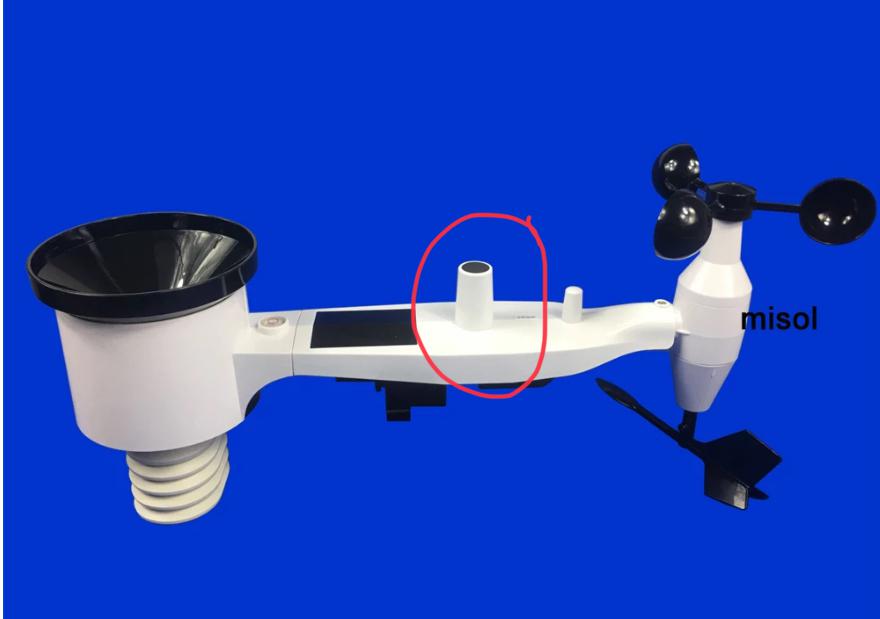 I could have used the included inside display module but I wanted to use a PM and Create my own which also accesses the internet for official weather readings and forecasts using openweather plus there is no comparison between the mono LCD and bland display of the commercial unit to a PM with 3.5Ē TFT. I will keep you posted on how it performs I am just awaiting a DHT22 to arrive then I will hoist it up the pole and give it some tests. Thanks again, Regards, Mick Mick's uMite Stuff can be found >>> HERE (Kindly hosted by Dontronics) <<< |
||||
| Mixtel90 Guru Joined: 05/10/2019 Location: United KingdomPosts: 7937 |
I'd be very tempted to use directional aerials at both ends. Certainly for the receiver anyway. You get far less noise pickup so the s/n ratio is far better and data will have far less errors at faster speeds. If your transmitter is only feeding one receiver then a directional aerial at that end will let you run it with a lot less power and the receiver will still receive the same signal level. Mick Zilog Inside! nascom.info for Nascom & Gemini Preliminary MMBasic docs & my PCB designs |
||||
| Volhout Guru Joined: 05/03/2018 Location: NetherlandsPosts: 5089 |
Maybe a stupid question.... When you are not powering the weather station from solar or wind energy, so you power it from an indoor supply, why not place the HC12 indoor (at the wall outlet ?). That avoids all kind of issues with water (a wet plastic box is a perfect faraday cage) and waterproof antenna's. You have to run a 3 or 4 wire cable down to the house though (in stead of 2 wires). Volhout PicomiteVGA PETSCII ROBOTS |
||||
bigmik Guru Joined: 20/06/2011 Location: AustraliaPosts: 2950 |
Hi Volhoult, All, I will/intend to, be enclosing the PM and HC12 in the existing shell and coating the boards with conformal coating plus all the joins plus entry points will be covered with that dielectric gel. I have a PM powered by a 2A 5v plug pack (for my PM based water tank gauge) directly under where I will be raising the weather station that is permanently ON so I will be running the 5V along with Serial console up some cat 5 to power the weather PM. Everything will be permanently powered, data transmission depends on what itís sending, rain can be fairly regular temperature not so etc. all short msg strings . The location of the plug pack is outside but protected from the rain and has been there for a couple of years now. I am considering an 18650 battery backup but may not. Regards, Mick Mick's uMite Stuff can be found >>> HERE (Kindly hosted by Dontronics) <<< |
||||
| The Back Shed's forum code is written, and hosted, in Australia. | © JAQ Software 2025 |